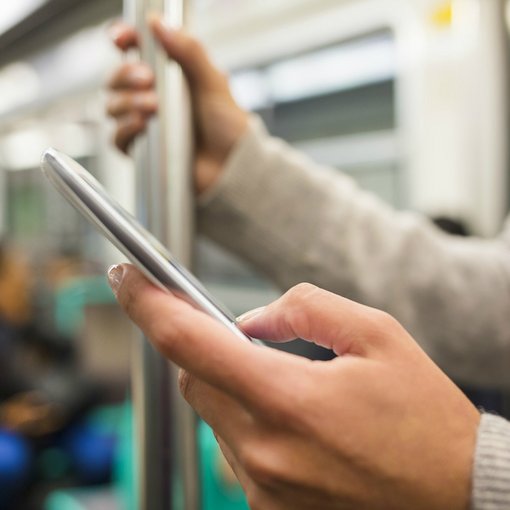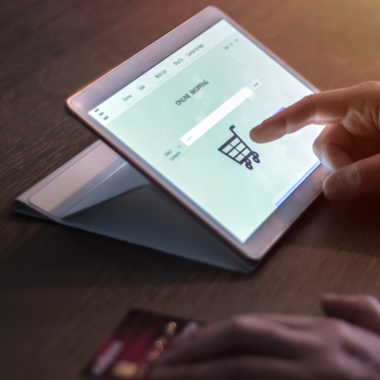
- Three minutes read
Commuter commerce: Driving mobile innovation
Where next for digital retailing? The answer is, of course, literally everywhere.
Where next for digital retailing? The answer is, of course, literally everywhere.
Like every other aspect of modern life, mobile devices are completely reshaping the way we think about buying things: not least on our journeys to and from work, the newest focal points for our daily shopping experiences.
So-called commuter commerce is an important and exciting trend, not just in mobile commerce but in e-commerce as a whole. Purchases made on the daily commute were estimated to account for 17% of all online sales in 2015, according to CEBR estimates last year — a total of £9.3 billion in the UK alone. 4G services above ground, and a rapidly growing wi-fi network below it in London, have encouraged more commuters to shop wherever they are. In the case of London’s Tube, 39% of all passengers daily, according to a 2016 study by mobile payment service Pay By Bank.
This trend has some critical implications for e-commerce across the board. It’s hardly a surprise that people are shopping via their mobile devices — according to a recent Criteo survey, 49% of all e-commerce transactions took place on a mobile device during Q1 2016, with 5% of the UK population – 2.5 million people – buying via mobile every day. But it's also obvious that we have a long way to go to build the services and infrastructure that make commuter commerce really useful for consumers.
Usability and delivery issues, in particular, remain serious and often fatal barriers to mobile transactions. Abandonment of web shopping carts at the checkout stage, for example, is still commonplace, particularly on sites not optimised for mobile. One survey by BI Intelligence in early 2017 showed that 60% of US shoppers had abandoned a mobile shopping cart in the previous month. Around a third had navigation problems trying to use non-optimised sites on their handsets, while nearly one in five had trouble entering payment information; unforgivable statistics in an age of mature mobile web standards and widely available technical design and payment services.
It’s not just sub-optimal usability that causes problems for mobile shoppers, of course. Excessive delivery charges or the lack of convenient delivery time slots are also major culprits, a fact that same-day delivery service Shutl says can drive as many as 95% of shoppers to other retailers. Commuter commerce may well be on a rapid growth curve, but the problem for many retailers is that it’s happening somewhere other than their own businesses.
One increasingly popular solution to this problem is so-called click-and-collect — a way for retailers to keep sales alive by extending their service beyond conventional delivery mechanisms. Instead of relying on mail or courier services that may take days to deliver goods, retailers now offer a collection service from their own stores or from a network of delivery points close to people’s homes. It’s an undeniably useful way of keeping the funnel flowing by increasing customer convenience at relatively low cost, hence its widespread adoption by major retailers all over the world. And it can boost sales at the same time — in some studies, up to 70% of shoppers bought additional items when they went to pick up their original purchase.
Click-and-collect is especially popular during busy periods such as Christmas; more than half of UK-based retail giant Marks and Spencer’s online Christmas orders were diverted to click-and-collect in 2015. And this is not just a UK trend; last year, ICSC reported that nearly a third of online US shoppers used a click-and-collect service over the Christmas period.
So far, so good. Somewhat inevitably, though, click-and-collect has already started to backfire on many retailers, especially during the busiest periods such as Black Friday and Christmas, when in-store resources for dealing with collections invariably start to groan under the pressure. For many retailers, the struggle to keep customers satisfied with the click-and-collect experience may yet turn out to be more hassle than it’s worth. The cost of that hassle was vividly illustrated by UK-based Tesco in March, which started charging £2 and more for collection of online orders to widespread displeasure from customers; just the latest chapter in a long tale of consumer click-and-collect woes. The click-and-collect idea may be well-established, but there’s clearly plenty of room for refinement and experiment yet.
These problems with the click-and-collect model are forcing the market to innovate. AmazonFresh, the company's fresh food service, is testing physical pickup locations in Seattle, where customers' pre-placed orders can be brought to the kerbside by Amazon employees. In the UK, John Lewis is partnering with startup delivery service toBoot to deliver online orders to secure boxes in customers' cars while they're out on the road- a sort of delivery/click-and-collect hybrid. And German national railway service Deutsche Bahn has announced DB BahnhofsBox, a service allowing commuters to collect online orders from interactive lockers at stations.
These are all interesting and important ideas. But commuter commerce is now a catalyst for still greater innovation, particularly in local communities. Right now, most neighbourhoods in large cities are full of retailers with amazing products, but who don’t have the technical or digital marketing resources to compete with the larger retailers online. How can we connect these small retailers to the customers within walking distance of their storefronts to and from their way to work, yet who are often shopping with more distant and less convenient competitors?
We think that one answer lies in mobile apps such as our own “go-local” app GOLO, launched in Canada in February, which allows consumers on the go to order ahead on their mobile device from local retailers for collection at their leisure. GOLO gives small retailers much greater visibility and reach without having to invest in the typical overheads of the bricks and mortar model — thus giving them a way to compete with the bigger brands. At the same time, it gives consumers easy and convenient shopping at their fingertips, via an easy-to-use ordering and payments interface, without having to worry about delivery slots or collection waiting times on their daily commute.
GOLO is showing how new approaches to commuter commerce and click-and-collect strategies can bring new digital life to local retailers, and encourage the growing “shop local” movement in North America —particularly in Montreal, GOLO’s launch city. Bars, restaurants, florists and artisan stores in Montreal now have access to a new channel for marketing their products, to a consumer base with proven proximity to and interest in the local community. Just three months from launch, we’re already seeing just how seamlessly and conveniently it blends into people’s daily lives. Commuter commerce may still be a relatively new phenomenon, but GOLO is giving us a glimpse of its potential — and a real indication of just how significant it is likely to become as the immensely powerful combination of mobile and payments becomes more deeply entrenched in our lives.




